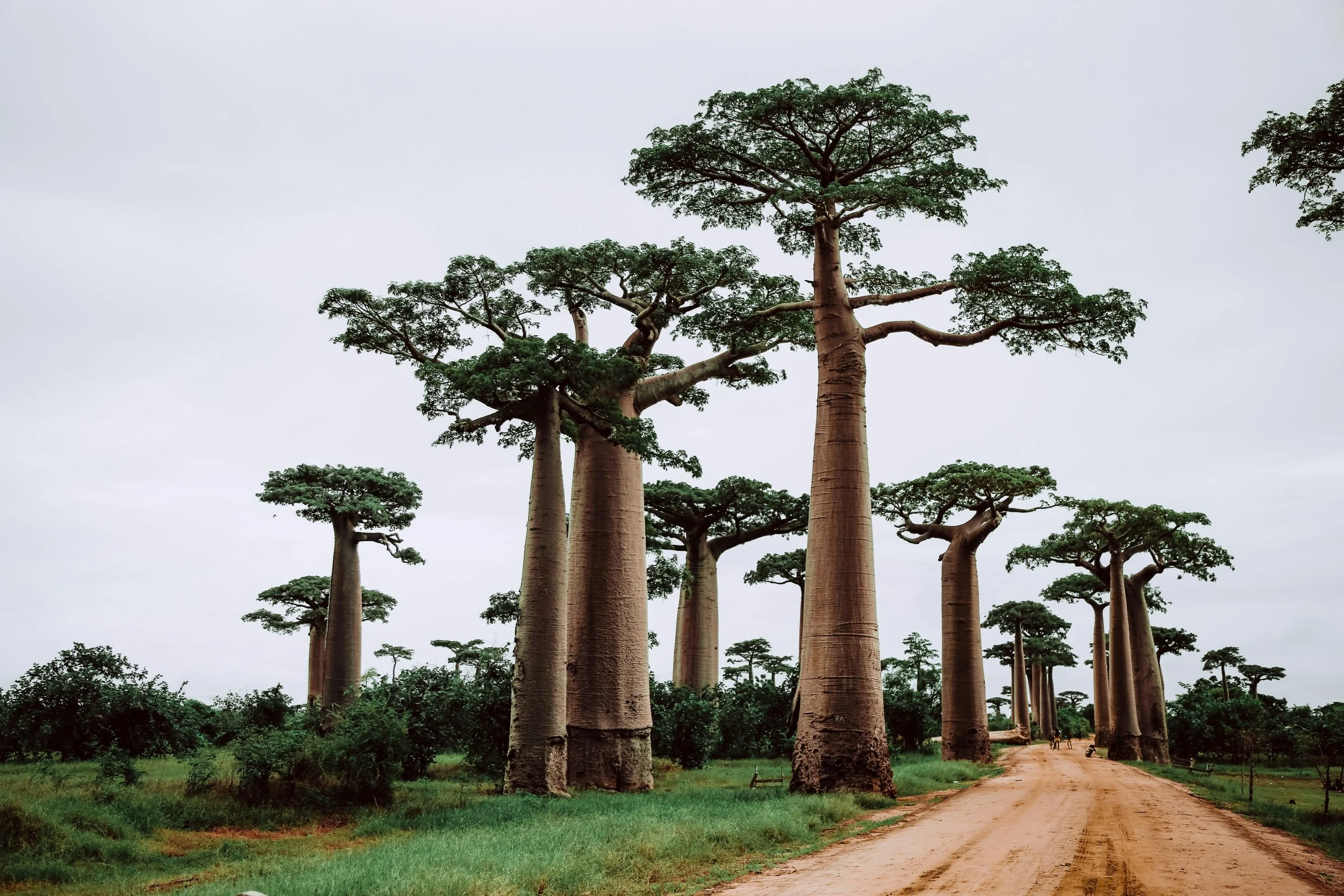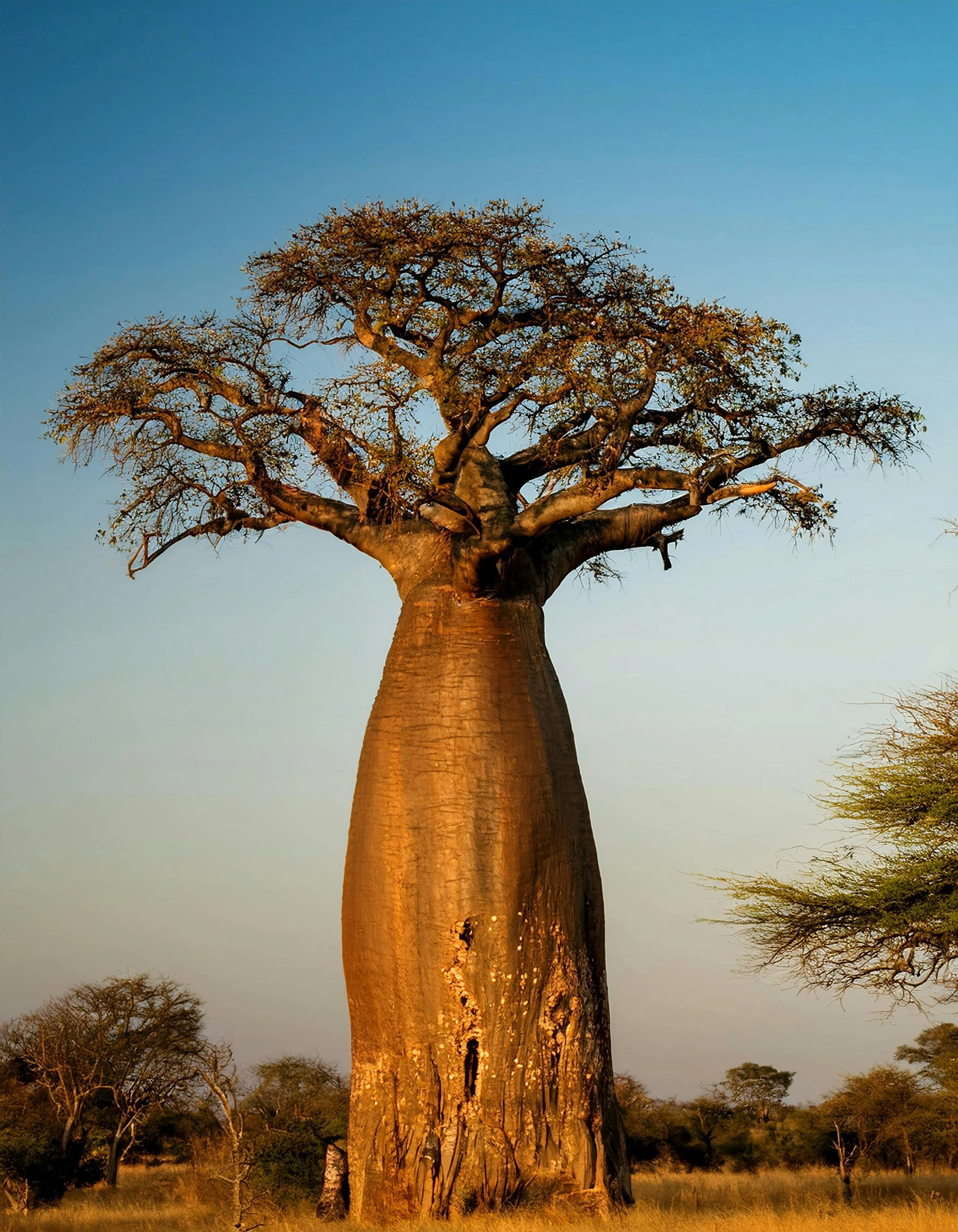HOW TO FIND THE BAOBAB TREES IN TANZANIA
Soaring Baobab Trees lining along a dirt road in Tanzania
People come to Tanzania for the wildlife. The fierce lions and majestic elephants are all must-sees on every itinerary. But not nearly enough people talk about visiting the Baobab trees.
Of all the types of trees you’ll find in Tanzania, the Baobab is by far the biggest and among the most unique because of its extraordinary shape, but more on that later. Tracking them down takes a little extra effort; you’ll have to head further afield to a secret location ( Tarangire National Park). But trust us, they’re 100% worth the detour.
If Baobab trees are on your Tanzania bucket list, but you're not exactly sure how to find them, you're in good hands with this article. This guide will walk you through exactly where to go, plus everything you should know before seeing these giants up close.
4-DAY SERENGETI ADVENTURE
Showcasing the best of the Serengeti, step inside our adventure and discover how it unfolds right before your very eyes….
WITHIN THIS GUIDE
Giant Baobab Trees shot from the ground up. Here you can see how toweringly tall they really are / Image: sergey-zhesterev
What Are Tanzania’s Baobab Trees?
Tanzania’s Baobab trees, recognized for their root-like branches reaching upwards, have earned the title of the country’s national tree. These beauties are actually some of the largest trees on the planet, growing to a height of anywhere from 16 feet to a whopping 82 feet tall. And while they’re native to Africa, you’d be forgiven for thinking they only exist in Tanzania because of how revered they are among locals, especially the communities that live close to them.
Often dubbed the 'Tree of Life,' it’s not just us humans who appreciate the Baobabs. Animals like elephants rely on them to survive during the dry season, as they can tap into the trees for water when rainfall is scarce.
What’s So Special About the Baobab Trees?
There’s more to Baobab trees than meets the eye. Beyond their respected standing in society and unusual shape, they’ve got all kinds of interesting facts behind them.
In certain parts of the world, including Tanzania, local communities use Baobab bark in their medicine, as they believe it’s packed with natural healing properties.
Some Baobab tree trunks have been found to be so big that they’ve been used for all kinds of purposes, from local jails to even post offices where people can send letters.
Several bird species, especially hornbills and weaver birds, commonly use Baobab trees as nesting sites.
While Baobab trees are known for their height, sometimes reaching up to 82 feet, how big they end up depends on their location and the water reserves inside their trunk.
Collectively, eight Baobab species exist in the world today. One is found in mainland Africa, including Tanzania; another is in Australia, and the rest are in Madagascar.
It's common for Baobab trees to live for more than 1500 years.
Although Baobabs have a reputation for their resilience and ability to live for centuries, they still face risks beyond their control, such as waterlogging, droughts, and thunderstorms with heavy lightning.
Locals with their cattle walking through the picturesque Baobab avenue. They are an extraordinary sight to behold on any safari / Image: elle-leontiev
The Story Behind the Name: Tree of Life
Most people know them as Baobabs, but they’ve also earned the nickname "Tree of Life." So, where does that name come from?
Found deep in the savannah, where the climate is extremely dry, Baobabs have managed to survive even during the harsh dry season when rainfall is minimal. They do this by storing large amounts of water in their massive trunks during the rainy season, giving them the strength to endure whatever the climate throws their way. But that’s not all; they also provide food with their edible fruit and leaves, offer shelter to various animals, and are used in traditional medicine. All these qualities have truly earned them the title 'Tree of Life.'
The Fruits of the Baobab Tree
One pretty remarkable piece of information that not everyone knows is that Baobab trees grow their own fruit, and it's packed with nutrients. The fruit is usually called Baobab (the same as the tree), but some people refer to it as 'monkey bread.' It looks like a coconut but with a more oval shape and a fuzzy greenish shell, making them quite distinct; you wouldn't be able to miss them, that's for sure.
Rather than falling to the ground upon ripening, the fruit remains on the tree for up to six months, allowing it to dry naturally before it can be used. The inside is known to be loaded with vitamin C, fiber, and antioxidants, hence why many people have started to call it a superfruit.
Where Can the Baobab Trees Be Found in Tanzania?
The best place to see Baobab trees in Tanzania is, hands-down, Tarangire National Park, which is why it’s a staple on most safari itineraries. Out of all the northern parks, Tarangire is especially famous for its rich plant life, and the towering Baobabs are the main highlight.
Given that the park is home to one of the largest elephant populations in the world, these gentle creatures benefit hugely from the Baobabs. One of the ways this happens is when they strip the bark for its nutrients and even use the trees’ branches to scratch and sharpen their tusks. Interestingly enough, this interaction gives the Baobabs time to regenerate, helping maintain a natural balance in the park’s ecosystem over time.
A close up of a magnificent Baobab Tree. Here you can see the dents in the tree where elephants have scratched and sharpened their tusks / Image: funnybee-bop
How to See the Baobab Trees in Tarangire National Park
Good news for you! Seeing the Baobabs in Tarangire National Park has never been easier. Over the years, Tarangire has exploded in popularity, as it's seen as a less crowded alternative to places like the Serengeti in the northern part of the country. It offers just as much beauty and wildlife, with the bonus of the iconic Baobabs thrown in.
First, you'll need to make your way to Tarangire National Park. Most visitors begin their journey by flying into either Arusha Airport or Kilimanjaro Airport, both of which are viable options. Arusha Airport is roughly an hour and a half’s drive from the park, while Kilimanjaro is a bit farther, about a 2 hour and 45-minute drive. The trip can be done by car, but it's recommended to go with a professional driver or a safari company that knows the area well.
When you arrive at the park, you'll need to pay an entry fee, which varies based on age and whether or not you're a Tanzanian citizen. Prices for non-residents are $50 (TZS 134,662.65), while for Tanzanians, it's $3.71 (TZS 10,000).
Next, you'll have to decide how you’re going to see the Baobab trees. Finding them can be a bit tricky unless you’re with a local guide who knows the grounds well, hence why we advise booking a safari in advance. This gives you the best chance of spotting them, as your guide can take you straight there and also show you the other highlights on your itinerary.
As for safari options, you've got a few to choose from. Game drives are the most straightforward; you just hop into the jeep, and the driver can take you straight to the trees; you might even spot some elephants too. Then there are walking safaris, which are more adventurous but require an armed ranger.
Baobab Trees during sunset. They are worth the visit and offer a wonderfully unique experience to your safari / Image: dmitrii-zhodzishskii
Frequently Asked Questions
What Is the Fruit of the Baobab Tree Called?
The fruits that grow on the Baobab tree are officially called Baobab, but they also have been handed the nickname 'monkey bread' because of their popularity among monkeys as a food source.
Am I Allowed to Touch the Baobab Trees in Tarangire National Park?
Although there are no rules against touching Tarangire's Baobab trees, we don't advise anyone to do so because of their revered status and importance to the park's ecological system. Your safari guide will get you as close as possible so you can take some photographs in front of them without harming the trees or disturbing the animals nearby.
When Is the Best Time of Year to See the Baobab Trees?
Tarangire National Park is open to visitors all year round, but the dry season is the preferred time to visit due to the decrease in rainfall, which makes it easier to explore the park’s grounds without the risk of cancellations. The dry season in this area runs from June to October, but be aware that this is also the high season, so there will be more people in the park.
Where else in Tanzania can I see the Baobab Trees?
Baobab Trees can also be found in other regions of Tanzania such as Ruaha, Lake Manyara and Mikumi National Parks. You can also find Baobab Trees in parts of the Serengeti and Nyerere National Park too. Even though, Tarangire is the best place to see them, Ruaha comes in at a close second.
Is Baobab the Official Name of the Trees?
Baobab is the most commonly used name for the trees, but the official scientific name it goes by is Adansonia Digitata.
Join us on our incredible 2-Day tarangire safari
Experience the magic of Tarangire National Park - from its towering baobab trees, sweeping golden savannas, and wildlife encounters that will inspire you and take your breath away.
If you are traveling solo, with friends or family, or within a large or small group - this adventure guarentees to thrill, delight and leave you with memories that last a lifetime.
Our 2-day, 1-night adventure is ideal for travelers who want to add a thrilling chapter to their safari or for those who are seeking a quick and exciting escape.








